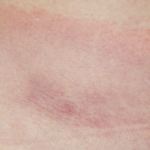Lyme disease is often considered a cause of chronic fatigue, pain and other incapacitating symptoms. This assumption stems from analyses of patients who seek retreatment for Lyme disease. However, a new study suggests that Lyme disease is not life altering in the long term for most patients. Specifically, patients with culture-confirmed Lyme disease have similar physical and mental health as the general U.S. population at 11–20 years post-diagnosis.
In a study published online April 17, 2015, in Clinical Infectious Diseases, researcher George P. Wormser, MD, professor of medicine at the New York Medical College in Valhalla, and colleagues report results from a questionnaire designed to evaluate the quality of life in patients with well-documented early Lyme disease who received annual follow-up.1 They used the 36-Item Short Form General Health Survey (SF-36) version 2 to evaluate outcomes in patients with Lyme disease one to two decades after diagnosis.
Although the study enrolled 238 patients, only 100 returned to the study center during the time when the SF-36 was administered. Participants and non-participants had similar Lyme disease-related characteristics at study entry, such as the proportion who exhibited multiple erythema migrans (EM) skin lesions. The mean age of the participants was 64.9 years (range 42–86 years) at the time of the SF-36 assessment. The investigators found that the SF-36 summary scores of physical and mental health were virtually identical in the participating patients as in general population normative data.
Results in Context
Approximately 70–80% of patients have EM as the earliest manifestation of Lyme disease. The study by Wormser et al focused on these patients, but did not include patients with extracutaneous manifestations of Lyme disease. Thus, the study did not specifically include (or exclude) patients with neuroborreliosis or late Lyme arthritis.
In a 2003 study in the American Journal of Medicine, Dr. Wormser and colleagues published data indicating that 10% of patients with culture-confirmed Lyme disease experienced persistent symptoms for more than one year after antibiotic therapy.2 They also reported that approximately 1% of patients met criteria for fibromyalgia 19 years after a diagnosis of Lyme disease, compared with 2–8% of the general U.S. population.3 Although it’s difficult to say definitely that Lyme disease is not involved in symptoms of fibromyalgia, data from recent studies suggest that it is not a major cause. This should reassure patients and physicians that early Lyme disease is not likely to cause life-long debilitation.
Patients with Hematological Malignancy
In a study published online May 8, 2015, in Clinical Infectious Diseases, Vera Maraspin, MD, PhD, professor of infectious disease at the University Medical Center Ljubljana, Slovenia, and colleagues described their outcome data.4 They reported that even patients with Lyme disease with hematological malignancy (HM) in addition to EM had excellent outcomes following treatment with antibiotics. The investigators based their conclusion on data collected at a single European center over a period of 22 years.
The authors concluded, “Our study showed that antibiotic treatment approach as used in immunocompetent patients with EM is effective also in patients with underlying HM. The results apply to European regions with similar ratios of Borrelia genospecies causing EM as in Slovenia (80–90% B. afzelii, 5–15% B. garinii, <5% other Borrelia species) but may not entirely pertain to North America where LB [Lyme borreliosis] is caused by B. burgdorferi sensu stricto.” (posted 5/22/15)
Dr. Pullen is a medical writer based in the Chicago area.
References
1. Wormser GP, Weitzner E, McKenna D, et al. Long-term assessment of health-related quality of life in patients with culture-confirmed early lyme disease. Clin Infect Dis. 2015. Apr 17. pii: civ277. [Epub ahead of print].
2. Nowakowski J, Nadelman RB, Sell R, et al. Long-term follow-up of patients with culture-confirmed lyme disease. Am J Med. 2003. 115(2):91–96.
3. Wormser GP, Weitzner E, McKenna D, et al. Long-term assessment of fibromyalgia in patients with culture-confirmed lyme disease. Arthritis Rheumatol. 2014. 67(3):837–839.
4. Maraspin V, Ružić-Sabljić E, Lusa L, and Strle F. Course and outcome of early lyme borreliosis in patients with hematological malignancies. Clin Infect Dis. 2015. May 8. pii: civ341. [Epub ahead of print].



